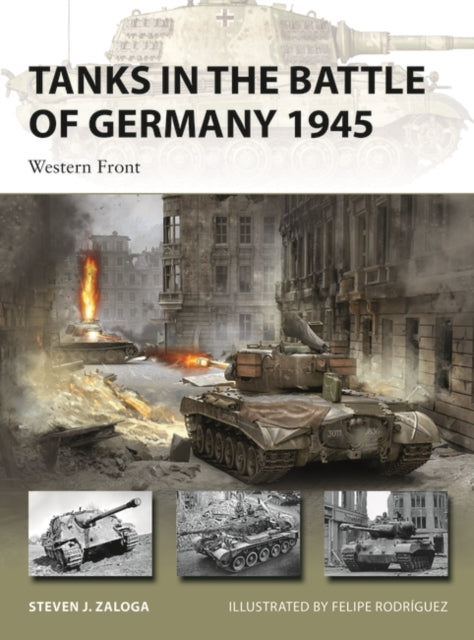Tanks in the Battle of Germany 1945 Western front
Usually shipped within 24 hours
UK deliveries from £5.95
Delivery & Returns
Delivery & Returns
We use the Royal Mail, DHL Express or UPS for our customers. For UK addresses, deliveries under 10kg are a standard £4.95 via Royal Mail Tracked 48 Service. For orders over 10kg and overseas customers, postage is calculated for you at checkout once you have entered your postal address. This price, does not include any potential custom charges that may apply, depending on the product or destination, as every country has very different import duties / taxes. Online exclusive products (such as trainers) will be delivered to you directly from the printer, separate from other items in your order, but your postage fee covers ALL items in your order.
If you are unhappy with your purchase, please email shop@tankmuseum.org within fourteen (14) working days of receiving your goods, and return it to us at the address below, in its original condition, unopened (with any seals and shrink-wrap intact) and we will issue you a full refund or replace it. Goods must be returned at your own cost. If the item is faulty, you do not need to return it, we will send you a replacement free of charge.
Description
Description
The crossing of the river Rhine marked the beginning of the end of the Third Reich, but the Wehrmacht would fight ferociously on its home soil until the fall of Berlin. The Battle of Germany saw the most advanced tanks of the Allies pitted against the remnants of the once-formidable Panzerwaffe, now exhausted and lacking many of the essentials of armoured warfare, but equipped with the biggest and most powerful tanks they would ever field.
In these last months the Allies were now equipped with the most advanced Sherman's such as the M4A3E8, as well as some of the types that would go on to have successful post-war careers such as the Pershing, Comet, and Chaffee.
In contrast the Panzer forces had pinned their hopes on small numbers of monstrous types such as the Jagdtiger and Tiger II, as well as the workhorse Sturmgeschutz and Panzer IVs and Vs. But with German forces crumbling, the Panzerwaffe lacked trained crews, replacement vehicles and fuel, while the Allies' well-supported tank forces advanced through Germany in spectacular combined-arms fashion. Packed with information on tank numbers, types, and comparative performance, this book sheds new light on the two sides' tanks, organization, and doctrine, and explains how the ultimate tank battles of World War II were really fought.
![Tanks in the Battle of Germany 1945 Western front Book [variant_option4]](http://tankmuseumshop.org/cdn/shop/products/9781472848116.jpg?v=1748337990&width=1214)

![Tanks in the Battle of Germany 1945 Western front Book [variant_option4]](http://tankmuseumshop.org/cdn/shop/products/9781472848116.jpg?v=1748337990&width=88)
![Christmas Tank Museum Wrapping Paper - Two sheet pack Wrapping Paper [variant_option4]](http://tankmuseumshop.org/cdn/shop/files/DSC2318.jpg?v=1759225755&width=176)
![Tanks in the Battle of Germany 1945 Western front Book [variant_option4]](http://tankmuseumshop.org/cdn/shop/products/9781472848116.jpg?v=1748337990&width=640)



